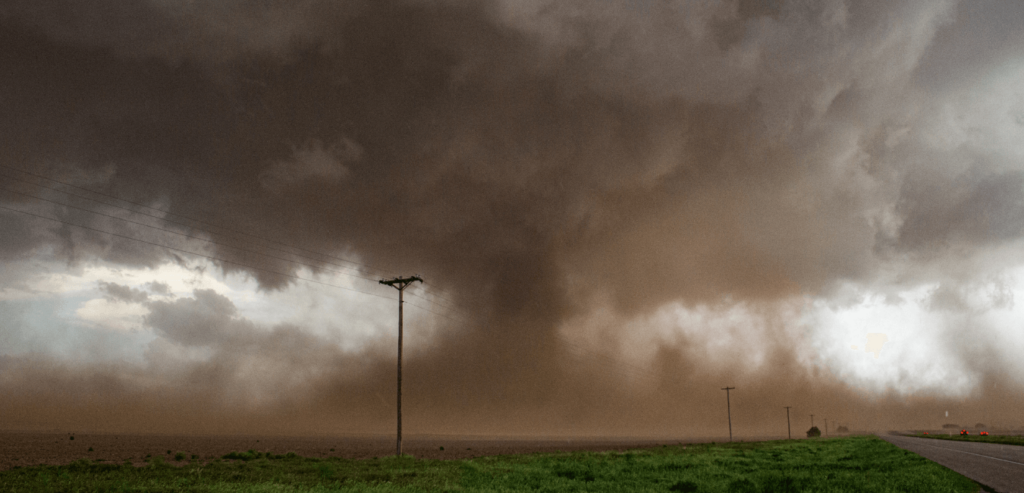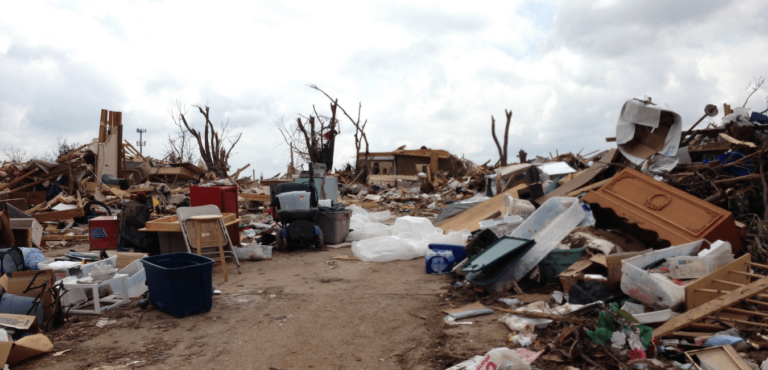The safety of your workplace and your employees relies on knowing how thunderstorms can affect your business.
The National Severe Storms Laboratory defines a thunderstorm as a rain shower during which you hear thunder. Since thunder comes from lightning, all thunderstorms have lightning.
A thunderstorm is categorized as “severe” if it has one inch or greater hailstones, winds gust greater than 57.5 mph, or a tornado. There are approximately 100,000 thunderstorms annually in the United States. About 10 percent of the storms reach severe levels. Although thunderstorms can occur year-round, they are more frequent in spring and summer months in the afternoon and evening hours.
Learn how thunderstorms can affect your business from the experts at ServiceMaster Restore®.
Damage Thunderstorms Can Cause at a Business
Since thunderstorms are always accompanied by lightning, any storm can cause power surges, structural damage, flash floods, and even destructive fires.
Thunderstorms Can Cause a Fire
Lightning can produce heat up to five times hotter than the sun. According to the National Fire Prevention Association (NFPA), lightning causes an average of 22,600 fires every year. These fires result in several injuries, deaths, and roughly $451 million of direct property damage.
Every lightning strike could start a fire but there are some situations where it is more common. Some flashes contain a continuing current or “hot lightning.” In such cases, the charge flows continuously over a sustained period rather than in intermittent surges. This longer period of charge flow causes objects to heat up and possibly ignite. Without protection, buildings can sustain fire damage.
Power Surges Can Destroy Electronic Devices
Another way how thunderstorms can affect your business is that they can create a power surge. A power surge is a fast, intensive spike in the electric current. If lightning strikes a power line, telephone wire, or your office itself, it can create an intense burst of electricity that travels through the cables and harms your electrical devices.
Power surges can damage or permanently destroy computers, telephone systems, and any other plugged-in appliances inside the business. Surges can cause costly damage, and you may even lose data completely.
Structural Damage
Structural damage from a thunderstorm comes in various forms. If lightning strikes a tree and it falls on your business, you could be dealing with shattered windows, a damaged roof, or other structural destruction. Your building could also experience structural damage from direct lightning hits or lightning-related fires.
If the thunderstorm leaves areas of your building open to the elements, you could have additional damage caused by rainwater or flood water entering through these compromised spots.

What to Do Before, During, and After a Thunderstorm
There are several things you should do to prepare for a severe thunderstorm in your area. In addition to the tips below, you should take a moment to read about the technology we recommend to weather the storm.
Before the Storm
While lightning may seem unpredictable and unstoppable, there are steps you can take to reduce how thunderstorms can affect your business. Being prepared can help ensure the safety of your employees, customers, and building.
Use these tips to help keep your business safe from thunder and lightning:
- Know the terminology for a storm. A severe thunderstorm WATCH means storms are likely in your area, and you need to be ready to take necessary action. While a severe thunderstorm WARNING means storms have been reported by spotters or indicated on the radar. If there is a thunderstorm warning, you need to take immediate action.
- Familiarize yourself with the warning system for your community. Set up your cell phone to receive emergency alerts. Follow weather channels on social media to stay ahead of inclement weather.
- Establish and label a shelter location for your building. Choose a place where there are no windows, skylights, or glass doors. Space should have enough room for all employees, customers, or vendors who may be at your business during a storm. Multiple areas may need to be designated to accommodate staff.
- Stock emergency supplies, including flashlights, battery-powered radio, and a first aid kit. You will also want to have bottled water on hand.
- Develop a business emergency plan and review it annually with your employees. Employees should be familiar with procedures during a weather incident.
- Identify and secure potential hazards on your property, including fuel tanks, woodpiles, or other materials.
- Keep all trees and landscaping properly trimmed and groomed. Remove dead trees and low-hanging branches. Look for branches that are close to power lines, have them cut back or removed.
- Determine any essential business equipment that relies on electrical power. Install a backup generator for necessary emergency power.
- Install surge protectors or grounding systems at your office.
- Consider installing a lightning rod on your building. Rods don’t attract lightning but rather provide a safe route for the current. The rod on top of the Empire State Building is hit by lightning about 25 times per year, protecting the New York City building.
During the Storm
If you know a thunderstorm is approaching, then there are a few steps you can take to minimize how thunderstorms can affect your business. If a WARNING is issued, you need to seek shelter immediately.
- Unplug electronic devices to prevent power surges. Power off computers and any machine that runs on electricity.
- Avoid using corded phones and electrical equipment; cordless and cellular telephones are safe to use.
- If possible, move all vehicles into a garage.
- Bring in or secure all outdoor furniture, equipment, or other loose items so they won’t be damaged. These items could also be picked up by wind causing damage to your building.
- Stay away from windows and glass doors. If time permits, shutter windows to protect them from damage.

After the Storm
If lightning strikes and causes damage to the structure or person, call 911 immediately.
Wait for the storm to clear. Don’t assume that the storm has passed because you can no longer hear thunder. Storms move in bunches, and you may be experiencing a minor break in the pattern. Check with the weather channel to make sure that the storm has cleared in your area.
You may be dealing with downed power lines, damaged property, flooded roads, and power outages.
Here a few tips to help you stay safe after the storm has passed:
- Once it has been confirmed that the storm has passed, safely assess the damage to your business.
- Survey the outside and inside of the building for damage. Be sure to check the roof and areas that are known for flooding.
- Don’t drive on roads with flooded water.
- Report power outages and downed lines.
- Contact your insurance company to report any damage.
If your business did experience damage from a thunderstorm, know that you’re not alone. The experts at ServiceMaster Restore are ready 24/7 every day of the year to help get your business up and running as soon as possible. We offer solutions that fit you, your employees, and your business. Get in touch with us today.

